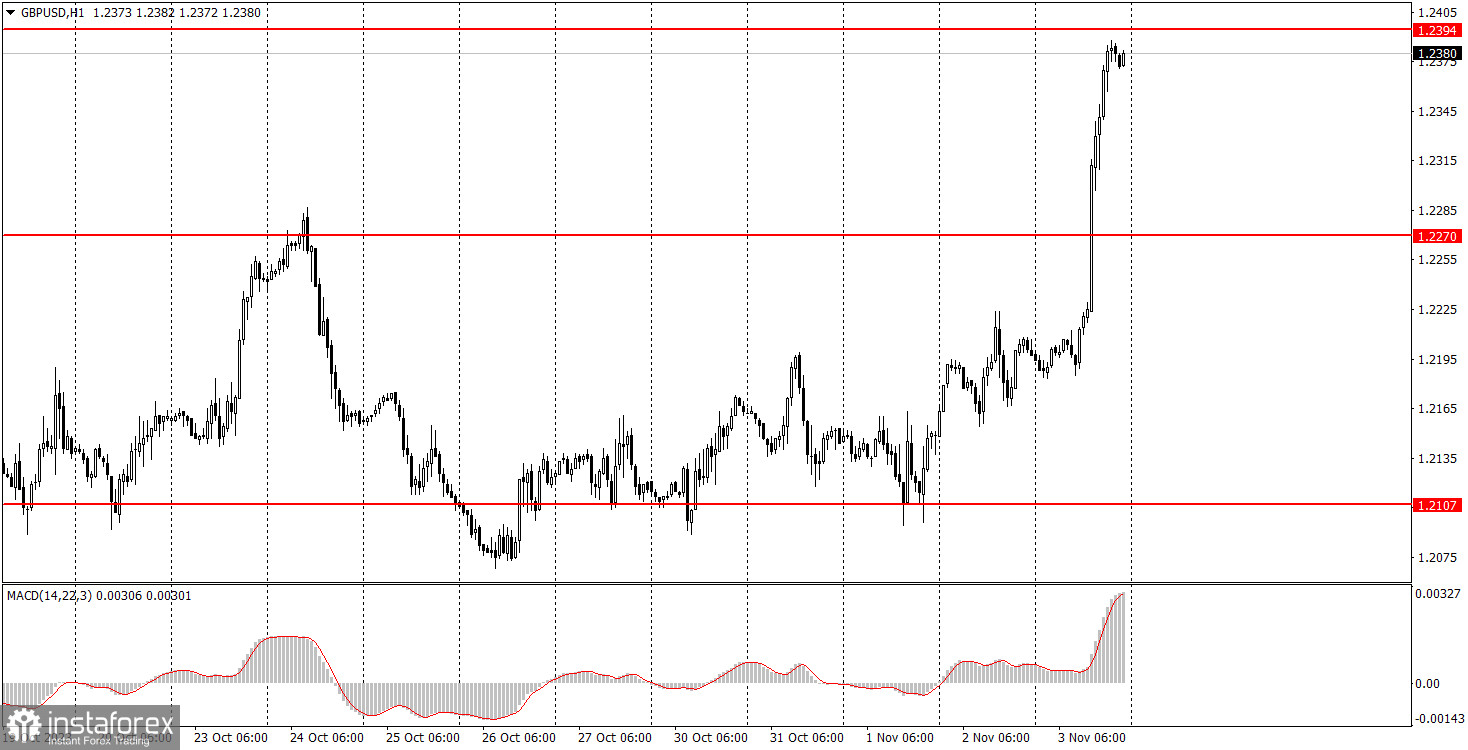Analyzing Friday's trades:
GBP/USD on 30M chart

GBP/USD sharply grew by 200 pips at the end of Friday. The British pound finally exhibited high volatility and strong trends. Naturally, this movement was triggered exclusively by U.S. economic reports. However, do recall that we were expecting a more pronounced correction from the pound, and it eventually materialized. As a result, the pair continues to correct higher, but it could end at any moment. Take note that the main trend is a bearish one, and the pound lacks strong fundamental support, so it could resume the downward movement at any time.
Currently, there are no clear trend lines or channels due to the recent chaotic price movements. The coming week might feature similarly turbulent movements, as the pound doesn't have a strong fundamental or macroeconomic background to support its growth.
GBP/USD on 5M chart

On the 5-minute chart, only one trading signal was generated. The pair approached the 1.2179 level twice during the Asian and European sessions, but both times it fell just short of reaching it by a small margin, making it impossible to be accurate. As a result, we did not receive a strong buy signal like we did with the euro. However, a buy signal was generated during the U.S. session after the pair breached the 1.2270 level. Traders could execute this signal since the U.S. reports were not on the dollar's side, raising expectations of a stronger growth for the GBP/USD pair. The price subsequently climbed to the 1.2372-1.2394 range, where it was advisable to take profits, resulting in gains of approximately 100 pips.
Trading tips on Monday:
On the 30-minute chart, we had been anticipating a proper bullish corrective cycle for the GBP/USD pair, and it has finally materialized. However, the upcoming week's movements may be much calmer, and the correction could come to an end. The key levels on the 5M chart are 1.1992-1.2010, 1.2052, 1.2089-1.2107, 1.2164-1.2179, 1.2235, 1.2270, 1.2372-1.2394, 1.2457-1.2488, 1.2544, 1.2605-1.2620, 1.2653, 1.2688. Once the price moves 20 pips in the right direction after opening a trade, you can set the stop-loss at breakeven. On Monday, the UK is set to release the Construction PMI report for October. This has a low chance of affecting the pair's movements during the day. No other events are scheduled for Monday.
Basic trading rules:
1) Signal strength is determined by the time taken for its formation (either a bounce or level breach). A shorter formation time indicates a stronger signal.
2) If two or more trades around a certain level are initiated based on false signals, subsequent signals from that level should be disregarded.
3) In a flat market, any currency pair can produce multiple false signals or none at all. In any case, the flat trend is not the best condition for trading.
4) Trading activities are confined between the onset of the European session and mid-way through the U.S. session, after which all open trades should be manually closed.
5) On the 30-minute timeframe, trades based on MACD signals are only advisable amidst substantial volatility and an established trend, confirmed either by a trendline or trend channel.
6) If two levels lie closely together (ranging from 5 to 15 pips apart), they should be considered as a support or resistance zone.
How to read charts:
Support and Resistance price levels can serve as targets when buying or selling. You can place Take Profit levels near them.
Red lines represent channels or trend lines, depicting the current market trend and indicating the preferable trading direction.
The MACD(14,22,3) indicator, encompassing both the histogram and signal line, acts as an auxiliary tool and can also be used as a signal source.
Significant speeches and reports (always noted in the news calendar) can profoundly influence the price dynamics. Hence, trading during their release calls for heightened caution. It may be reasonable to exit the market to prevent abrupt price reversals against the prevailing trend.
Beginners should always remember that not every trade will yield profit. Establishing a clear strategy coupled with sound money management is the cornerstone of sustained trading success.





















